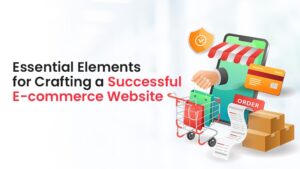The influence of the internet in India has been massive, reaching an average of 40 million new users every year — the fastest in the world. Low-cost smartphones, combined with affordable data packages, have propelled digital far beyond the big cities. The result — 400 million Indian consumers are now online.
Whether it’s searching for information, live streaming a cricket match, or watching their favourite daily soap online, consumers across the country are enjoying the easy access to the internet. And these consumers are discerning and demanding.
Brands that can understand their needs and tailor relevant experiences for them are the ones that will be able to delight them and move ahead of the competition.
Now, as the world faces a crisis, the rules of how we perceive the internet have changed.
What are people searching?
As the pandemic spread, so have the fears and uncertainties around it. People have made Google their family doctor and are keeping track of the symptoms they should look for. Many have turned to Google on life hacks to survive the pandemic. Among the most asked how-to questions were, “how-to: make a mask? make hand sanitizer? use Zoom?” and like never before, “how to cut your own hair?”
But as the lockdown keeps extending, people are acclimatizing to the situation and are looking for ways to endure it. For this, they’re completely dependent on the internet.
According to Google, the top search trend in India is for essential services such as doctors, pharmacies, grocery deliveries and ‘ration dukaan’.
Any industry that leverages these changing online trends will be able to stand b long after the dust settles.
Your Brand positioning
The impact hasn’t just shaken the world for consumers; it’s also having a significant impact on the way that companies operate too. During such indecisive times, it is important that brands know how to respond.
With customer spend dropping, and uncertainty threatening to tank the economy, businesses and entrepreneurs might find their focus veering towards protecting the profit line.
However, as many successful companies are beginning to learn, it’s how you position your brand in these challenging times that will decide whether you survive the crisis.
Here are some things you can do to figure out your branding strategy:
- Do a competitor analysis: Find out what your immediate competition is doing to identify what they’re doing right and figure out opportunities where you can easily one-up them by using a strategy they haven’t taken advantage of.
- Identify what makes you unique: If you can identify your USP that resonates with your audience and work to promote them, your brand positioning will take care of itself.
- Leverage your Website and Social Media: Put out content that gives value to your customers. Don’t sell, but engage. Use your website and social media pages to reach out to your customers and humanize your brand.
Now that you know your brand positioning, you can work towards generating business organically.
Leverage your SEO
Many businesses are either pausing their SEO campaigns or lowering the budget. On the contrary, this is the time stand out. This is the right time to go aggressive with your SEO strategies and as a thriving SEO company in Mumbai, we see this as a unique opportunity to bring growth to our client’s business. Stay connected with your audience, and they will love you more than your competitors. This is the right time to go aggressive with your SEO strategies.
There’s already a scarcity of products. People have no option other than to buy these products online. And when these goods aren’t available online, buyers will look for alternatives. Being on search results that people are searching for can mean a lot to your business. It’s time to leverage on the scarcity of specific items, work on ranking for those items and their alternatives, and build link building campaigns around them.
If you happen to sell any of the items that are in demand and not readily available, it’s time to make more profit. If your products or services do not fall under essential items, you should focus on improving your SEO strategy by further optimizing your content and website.
Also, with the sudden change in environment for working professionals, the users are searching for “how to homeschool kids” and “how to WFH”; there’s also a high demand for learning – people have been searching for “gym at home”, “5-minute recipes”, “learn online”, “teach online”, and “at-home learning”.
If you can tap into the aforementioned needs and reach people through SEO, you will strike gold.
And remember, it’s better to have a helping hand!
In-house or Agency?
During a certain period in a business’s life, the inevitable question will pop-up: in-house or agency marketing? First of all, there is no right or wrong. The answer depends on a variety of factors directly related to your business, and where you’re looking to take it in the future.
Let’s start with the in-house marketing team, which will vary in size and scope depending on the size of the organization (and the maturity of its marketing program). Usually, staffing for an in-house marketing team could be daunting as you’ll have to look for and hire people who excel in their respective fields. Again, it all depends on budget, organizational priorities, and immediate need. Some organizations can’t handle video in-house and hire that work out to an agency. Others have a dedicated SEO person but don’t have resources for PPC. In an ideal world, every organization has some kind of coverage for all of these important aspects of digital marketing.
If you don’t have the budget to hire a fully-staffed marketing team, hiring a digital marketing agency can be a cost-effective option. For the cost of hiring one marketing specialist, you could retain an agency and get access to 5-10 digital marketing experts.
Remember, the trends are changing – both in the digital and real world. So buckle up and adapt to the situation, only then your business will sustain and stand the test of this uncertain time.







